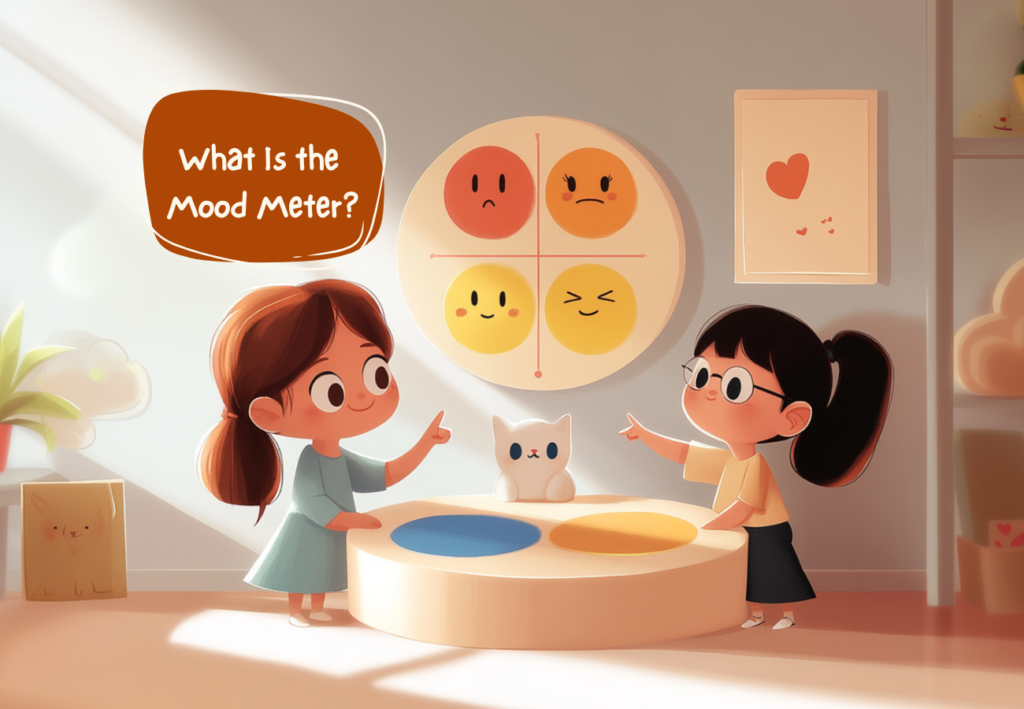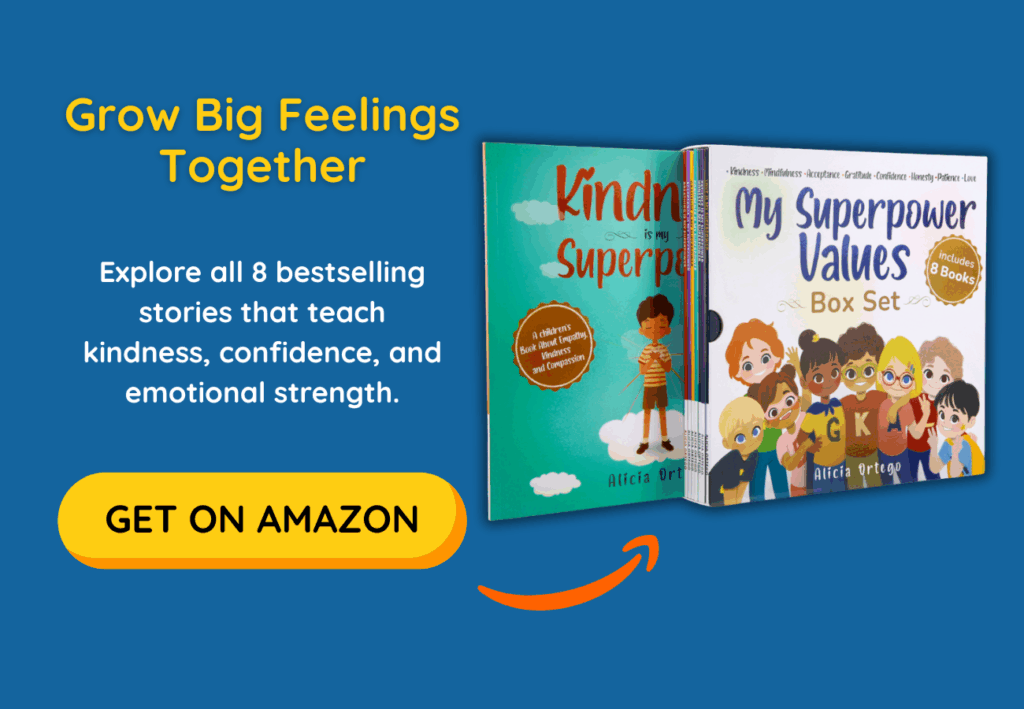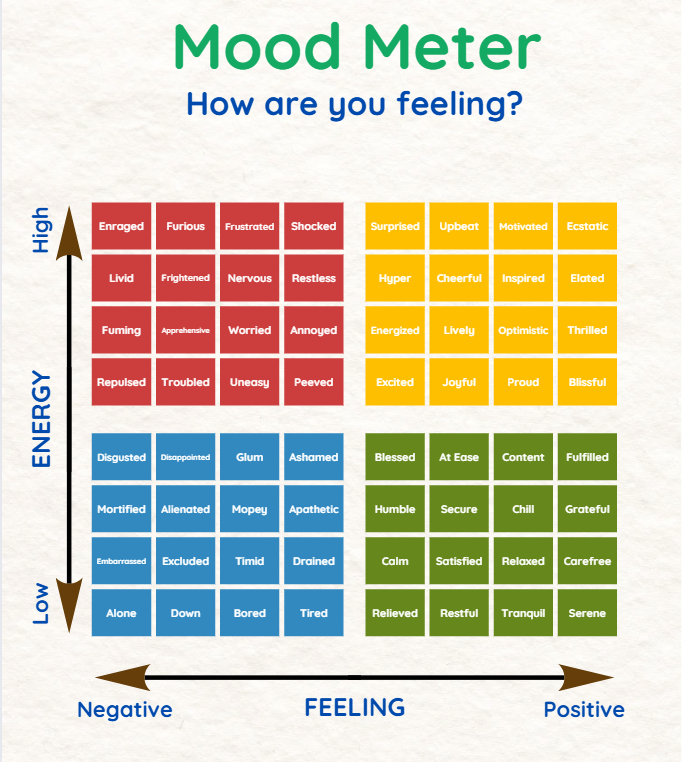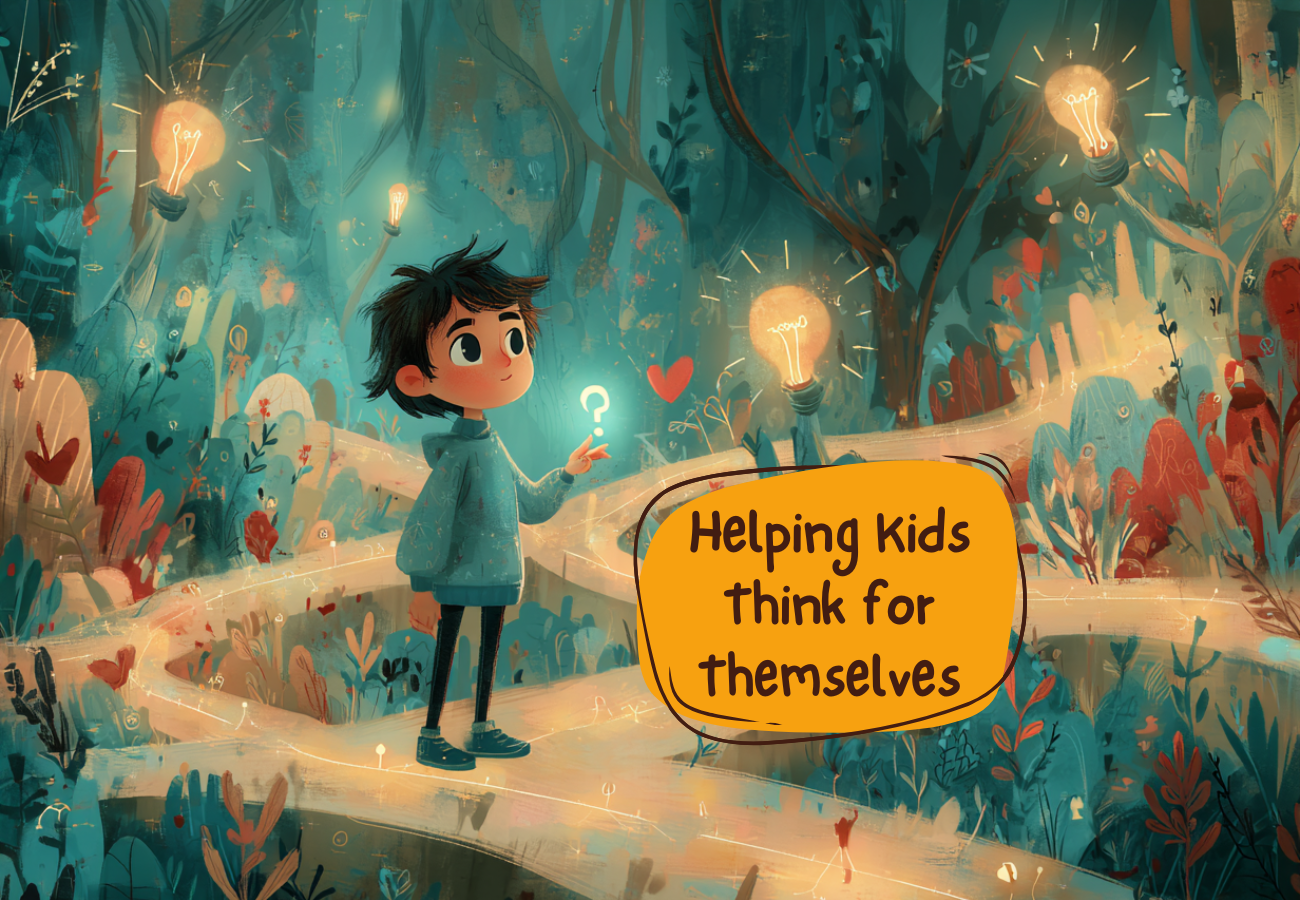What Is the Mood Meter and How Can It Help Kids?

Emotions play a huge role in our daily lives, and understanding them is a superpower every child deserves. One amazing tool to teach emotional awareness is the Mood Meter—a simple yet powerful way to identify and manage feelings. If you’re a parent, teacher, or caregiver, the Mood Meter can help your kids become more emotionally intelligent and confident in expressing themselves.
What Is the Mood Meter?
The Mood Meter is a visual chart that helps people identify and understand their emotions. Created by the Yale Center for Emotional Intelligence, the Mood Meter divides emotions into four quadrants based on energy (high or low) and pleasantness (positive or negative). These quadrants are often color-coded:
- Red: High energy, unpleasant emotions (e.g., anger, frustration).
- Blue: Low energy, unpleasant emotions (e.g., sadness, tiredness).
- Green: Low energy, pleasant emotions (e.g., calmness, contentment).
- Yellow: High energy, pleasant emotions (e.g., joy, excitement).
By helping kids label their emotions using the Mood Meter, we give them tools to navigate their feelings and communicate better.

Why Use the Mood Meter for Kids?
Children often feel overwhelmed by their emotions, especially when they don’t have the words to describe them. A Mood Meter for kids transforms this challenge into an opportunity for growth.
- Builds Emotional Vocabulary:
Instead of saying “I feel bad,” kids can pinpoint emotions like “frustrated” or “lonely,” making it easier to manage feelings. - Fosters Empathy:
By recognizing their own emotions, children become more empathetic toward others. - Improves Self-Regulation:
Once kids know what they’re feeling, they can take steps to adjust their mood—whether that’s through deep breathing, talking to someone, or taking a break. - Supports Mental Health:
Regularly identifying emotions can reduce anxiety and promote a sense of control over their emotional world.
How to Use the Mood Meter at Home or in the Classroom
- Introduce the Mood Meter Chart:
Display a colorful chart in a common space. You can use printable versions like

Download our free Mood Meter for your children!
- Make It a Daily Habit:
Start the day by asking kids where they are on the Mood Meter chart. It could become part of a morning routine at school or home. - Discuss Emotions Openly:
If a child is in the red or blue zone, encourage them to talk about what made them feel that way. Suggest coping strategies or ways to change their mood if needed. - Incorporate Creativity:
Kids love visuals! Create a Mood Meter meme with their favorite characters, or let them draw their own emotion quadrants. - Use Apps for Support:
Digital tools like the Mood Meter app make it even easier to track emotions on the go.
Bringing the Mood Meter to Life
Imagine using the Mood Meter during storytime. For example, while reading Breathing is My Superpower, you can ask your kids how the character might feel during moments of stress or calm. Would they place themselves in the blue zone when they’re overwhelmed or the green zone when they practice mindful breathing? This exercise makes the experience interactive and helps children connect emotions to their actions.
You can also complement this activity with other books from the My Superpower series. Titles like Kindness is My Superpower and Listening is My Superpower offer stories that help kids practice empathy, attentive listening, and emotional awareness, making the Mood Meter exercises even more meaningful. The full My Superpower box set includes engaging stories on gratitude, honesty, and kindness—perfect for building a well-rounded emotional toolkit.
For more practical ways to teach kindness, check out our article on The Kindness Calendar Adventure for Kids. Emotional awareness and kindness go hand in hand, fostering a happier and more supportive environment for children.
Why It Matters
Helping children identify and understand their emotions is one of the most meaningful gifts we can give. The Meter isn’t just a tool; it’s a bridge to better relationships, stronger self-awareness, and lifelong emotional well-being.
So, where are you on the Mood Meter today?
More articles

Helping Kids Think for Themselves — Gently and Without Pressure
Independent thinking is the ability to look at a situation, ask questions, form opinions, and make choices with confidence. Kids who think for themselves tend to feel steadier in their daily lives. They trust their thoughts and can speak up even if others see things differently. Parents and teachers often want this skill for kids, […]

The Impact of Color and Texture on Children’s Emotions, Behavior, and Learning
Children don’t just see their environment — they absorb it. Every color, every texture, and every visual detail around them quietly shapes the way they focus, relax, behave, and even understand their own emotions. While adults often adapt to a space automatically, children respond to it instantly and instinctively. That’s why creating a supportive environment […]

What Is Preschool and Why It Matters for Early Development
Choosing the right preschool is one of the most critical decisions parents make in shaping their child’s early development. In today’s evidence-based educational climate, early childhood education is recognized not merely as preparatory schooling, but as a scientifically validated foundation for cognitive, emotional, and social growth. High-quality programs such as Little Scholars NYC, an established […]



